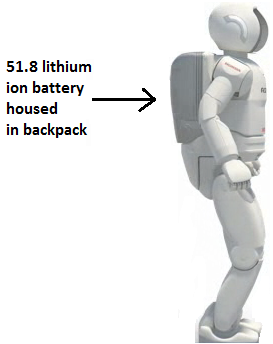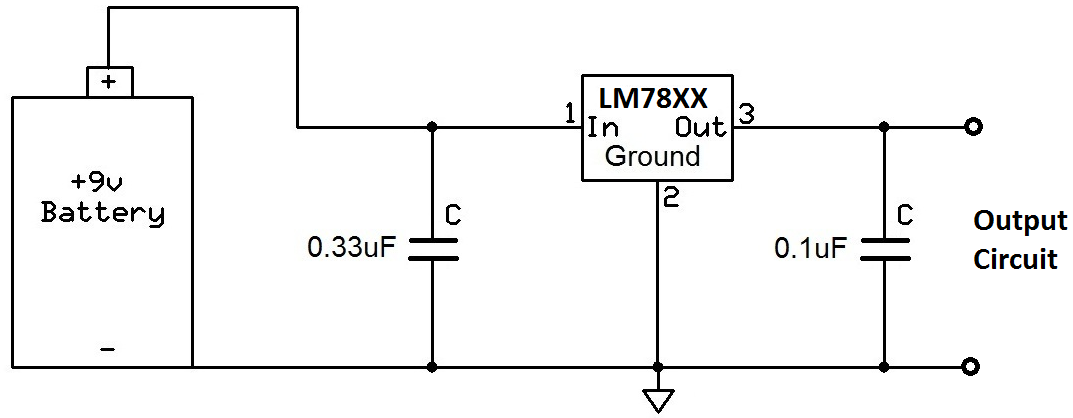How to Build a Robot- Adding Electrical Power

Robots, like any devices to function, need as source of power in order to work.
Raw Power Source
Robots could be built with gasoline-powered engine and pneumatic actuators, but for the most part, since they can electronic components, they are powered by electricity, usually by batteries. This is the most common and practical way to power most robots, especially humanoid robots. In fact, most humanoid robots on the market today, including the most advanced robots such as the asimo, are powered by batteries. They contain a large battery pack on their back or some other part of the body to be powered.
The image below shows the battery pack of an Asimo, one of the most advanced
humanoid robots in the market, produced by Honda.

The asimo is powered by a rechargeable, 51.8-volt lithium ion battery, which is housed in its backpack. It allows the asimo to function for one hour on a single charge. Then the asimo would need to recharge.
To find out more about the asimo, you can visit Honda's official site on it. However, the asimo only serves as an example of a battery-powered robot and isn't the mainstay of this article.
The asimo is powered by a 51.8V lithium ion battery, which happens to weigh a whomping 13 pounds. However, for most practical robots, a simple 9-volt battery is sufficient. Unless you're building an extremely complex robot that has many parts and requires a lot of power, 9 volts or 6 volts is sufficient. These types of batteries can be obtained from pretty much anywhere, including Radioshack or any supermarkets.
Batteries are safe, inexpensive, avaiable, reliable, standardized, and portable.
Rechargeable batteries are preferable. Although their initial cost is higher, it
leads to savings over time.
Power Regulation
We move on to other components which comprise the electrical power system of a robot.
The battery is usually the raw power source for a robot but the full electrical powering system consists of also a regulating circuit to stabilize and process the source, and a switch to turn on or off the power.
Robots receive power regulation usually through a voltage regulator. This is because we want the power to be the same always when the robot is operating. As batteries are used, the battery life decreases. It starts out with full voltage, 9 volts for a 9 volt battery, and decreases and decreases with usage. Unless stabilized, this would result in a robot that moves at different speeds, has different light brightness, and sensor readings, based on battery freshness. This can't be, so we must regulate the circuit's voltage.
Another reason for power regulation is that some parts of the robot need
more power
than other parts. For example, the DC motor your robot uses to move usually needs more power
than an LED.
Switch
The last that is usually on a robot is a switch to turn the power on or off. This is just a simple on-off switch. It is SPST.
If you have a robot that turns on or off based on sensors, such as a
photoresistor does
based on light, this switch would not even be needed. However, for non-sensor based robots,
this would be added.
Electrical Power Schematic Diagram
For now, we have just explained the electrical system of a robot to power it.
Based on these components, we can now draft up a schematic of a power regulation circuit.
The schematic for it is shown below:

Based on your robot's power needs, you will select a voltage regulator based on the voltage you need
for your circuit. The LM78XX family comes in a variety of voltages. The last 2 numbers indicates the voltage
that the regulator outputs. For example, a LM7805 outputs a regulated 5V. The LM7806 outputs a regulated 6V. The
LM7808 regulator outputs a regulated 8V. You choose which regulator you need based on the voltage requirements of
your circuit. If you only need 5V for your circuit, then you wouldn't even have to use a 9V battery. Instead
you could use 4 AA batteries and place them in series and get 6V and then use an LM7805 regulator to regulate
out 5V. If you need 6V-8V, then you can use the 9V battery and the appropriate regulator. The capacitors in parallel
to the regulator serve to filter out any ac ripple that may be on the DC line and to act as a smoothing capacitor
in case of voltage spikes.
We move on to other components which comprise the electrical power of a robot.
The battery is usually the raw power source for a robot but the full electrical powering system consists of also a regulating
circuit to stabilize and process the source, and a switch to turn on or off the power.
Related Resources
How to Recharge Batteries with a DC Power Supply
How to Recharge Batteries with Solar Cells